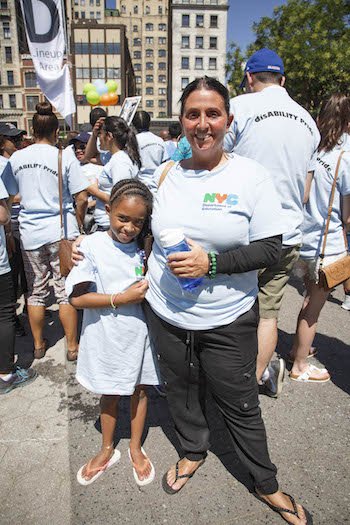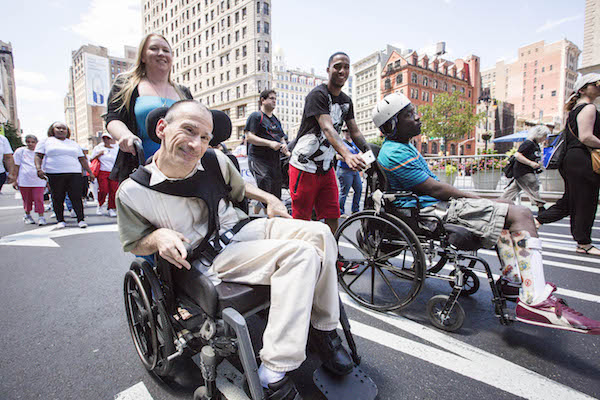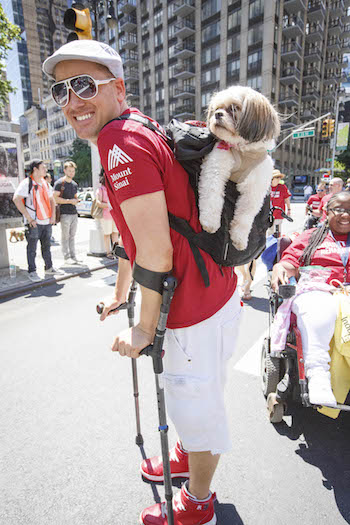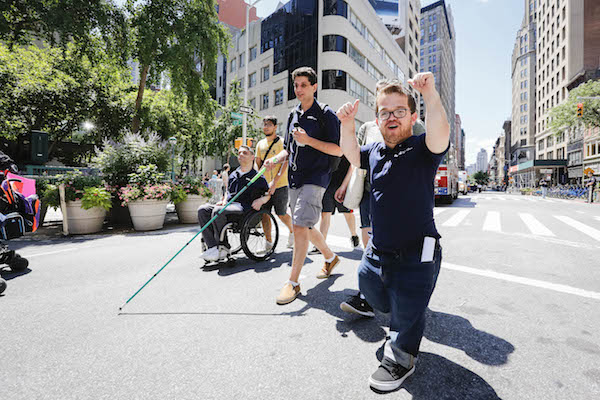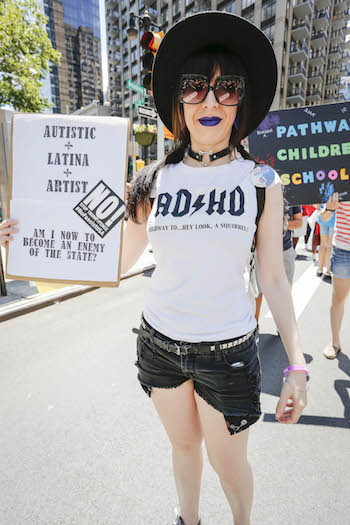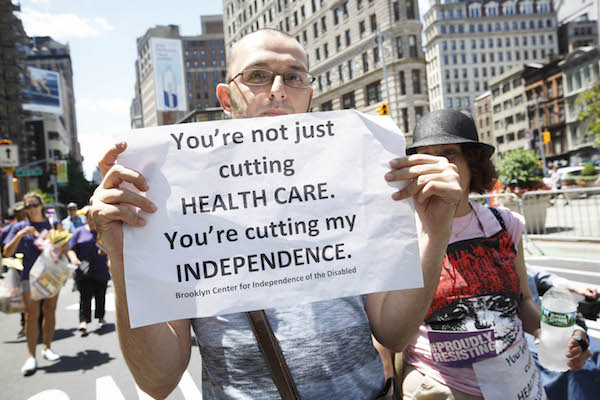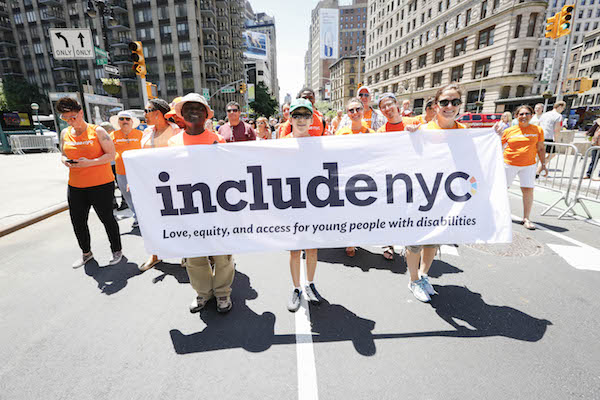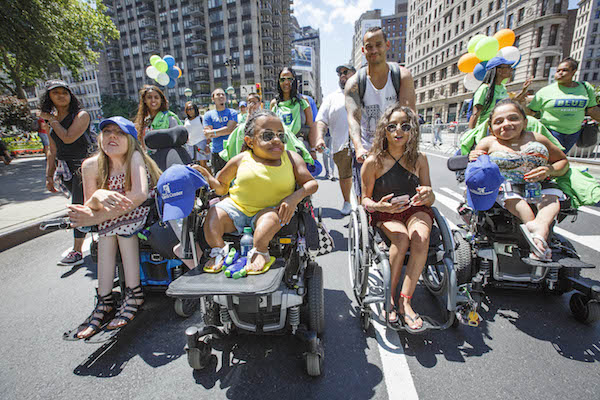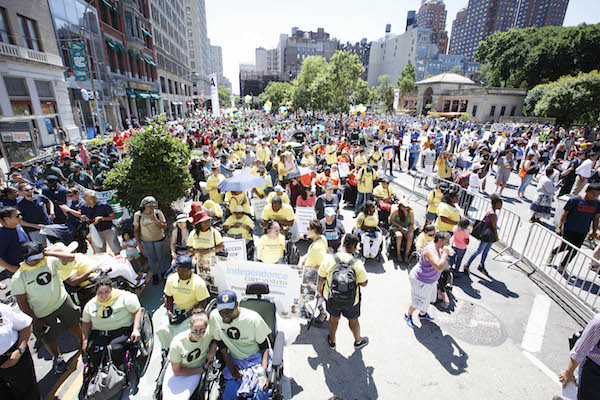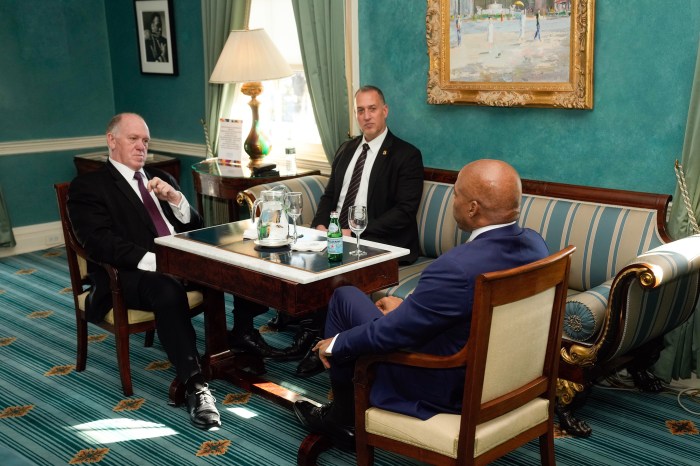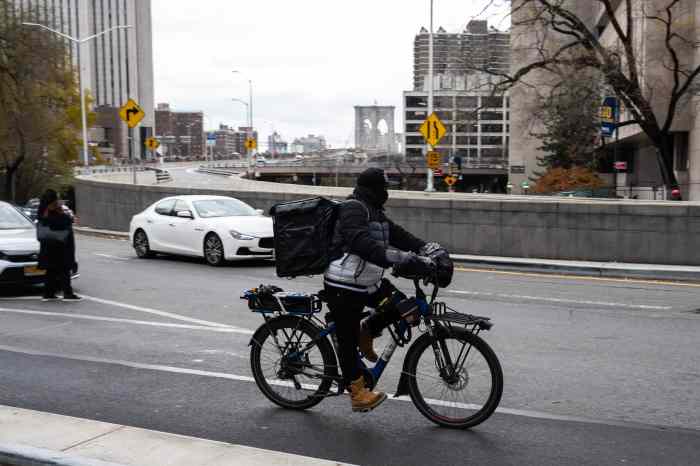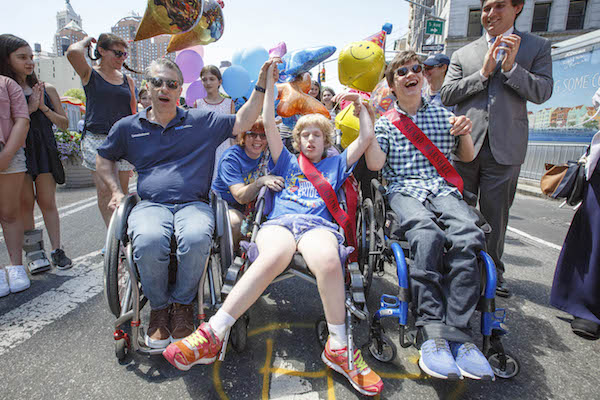
BY DUSICA SUE MALESEVIC | The sun dazzled, the mood was jubilant, and, of course, the speakers blasted Beyoncé for the third annual Disability Pride NYC Parade on Sun., July 9.
The festivities began in the morning at Union Square Park where Stephanie Wallace, 48, and her friends had gathered to participate in the parade. Wallace, a longtime Chelsea resident, said she came to show pride in who they are, and “support others like us. It gives us visibility. People don’t acknowledge us sometimes.”
Wallace eschewed the label “disabled,” saying it was more important that people don’t discriminate or are prejudice toward those with physical challenges. And, most importantly, don’t patronize. “Get out of our way and let us do what we do,” she said.
In April 2015, Wallace started the LAID Network, which focuses on love and intimacy for the disabled. It is a “team of individuals with disabilities seeking to inform the public about everyday issues and concerns that affect us,” according to the flyer Wallace and her friend, Vernita Worrell, 57, was passing out.
The organization has it’s own podcast, and Wallace recommended checking out YouTube channels, “Chicks in Chairs” and “Men on the Move.” The flyer said their projects are where there are “lively discussions about life, love, sex, and relationships. Sometimes it’s thoughtful. Sometimes it’s funny… but it’s always enjoyable.”
It was Worrell’s third time coming to parade and she wanted to “make people aware — that we are here, that we live.”
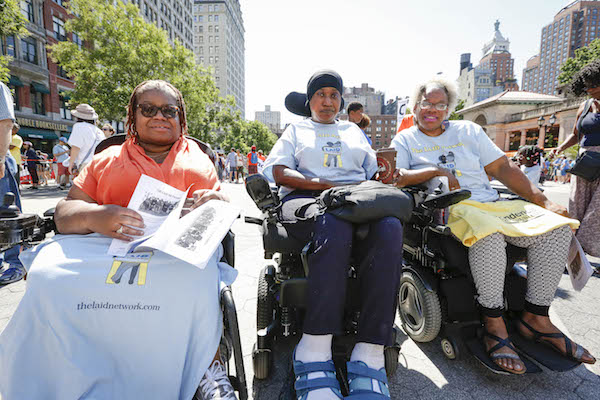
Indeed, awareness was an integral part of the founding of the parade. Jazz pianist Mike LeDonne founded Disability Pride NYC — now a nonprofit — after seeing how his daughter, Mary, was often treated in public, he told The New York Times in a January 2015 article. The inaugural parade was held in July 2015.
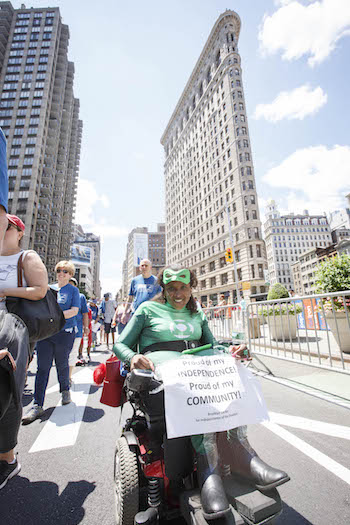
“Awareness is the key,” Valerie Joseph, 41, told Chelsea Now. “Stop treating us as we are in a wheelchair. Start treating us as people.”
Joseph is part of a nonprofit organization called Brooklyn Center for the Independence of the Disabled, known (BCID), which she said advocates for people with disabilities, and provides information about housing and transportation.
Gabriela Amari, 56, is also part of BCID, and said this was her third parade, noting that is growing every year. “It is extremely important people see us out and about. We’re no longer shut-ins. And we dance,” she said, and did so when a Michael Jackson song started playing.
Finding employment is an issue for those who have disabilities. “There are very few people with disabilities who can’t do some form of work so please hire us,” she said. “People aren’t willing to give us a chance.”
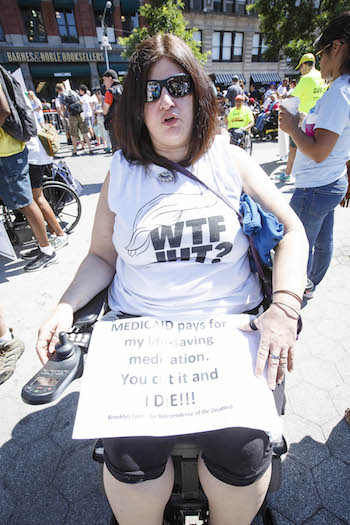
Amari said that with a few reasonable modifications, many with physical challenges could work — and that they’re well worth the modifications.
Marsha Steinberg is the assistant principal at PS169, a District 75 school on the Upper East Side. District 75 schools have programs focused on those with disabilities and special needs.
“We want them to be productive members of society,” she said, adding students have found employment at Starbucks, CVS, and McDonald’s.
Steinberg has been at the school for 22 years, and she has seen how technology, specifically for assisted communication, has changed student’s lives for the better. “It opens up their whole life,” she said.
Making the city’s parks, playgrounds, and programs more accessible for children, teens and adults with disabilities is part of Christopher Noel’s mission. Noel, 42, is the accessibility coordinator for the city’s Department of Parks & Recreation, working on adding more ramps and playground equipment that is conducive for those with disabilities to play with.
“The key is children with disabilities will not [be] out of the mix,” he said.
Noel has participated in the parade since its inception and he comes to show pride for those wi†h disabilities. “The way to make the movement happen to create greater opportunities with persons with disabilities is to be seen,” he said. “Inclusion is the key.”
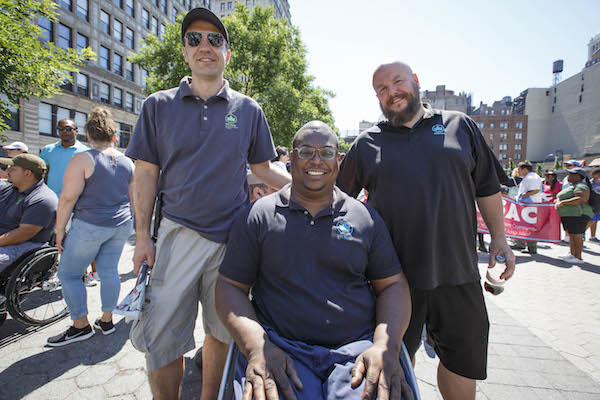
Before the parade headed up Broadway, some speakers warmed up the crowd, including Margaret Patterson-LeDonne and Mary. Patterson-LeDonne said her husband, Mike, was on tour but that he was proud of Disability Pride NYC. The parade’s tag is “inclusion, awareness, visibility,” but it is also “just plain fun. This is a day to celebrate. This is a day of pride and strength,” she said.
Micah Fowler, an actor on the show “Speechless” who served as the parade’s grand marshal, spoke beforehand, saying “Let’s roll.”
The Mayor’s Office of People with Disabilities kicked off the parade, followed by NYPD officers carrying flags and bagpipe players. Balloons of every color of the rainbow could be seen while people chanted, clapped, danced, and shouted “Woo-hoo!” as they made their way to Madison Square Park. All kinds of groups participated — city agencies, corporate sponsors, groups from every borough that focus on those with disabilities, health care providers among others.

People sported everything from umbrellas to tiny pink crowns while some handed out flyers, Mardi Gras beads, and bracelets. They carried signs that said “Change comes from you and me;” “Diversity is powerful;” “Do you even roll, bro?” “Medicaid saves lives;” “Inclusion Always;” “Disability rights are human rights;” and “I’m powerful just the way I am.”
The enthusiasm lasted until Madison Square Park, where there were several booths, a few food trucks, and another stage with bands performing. A huge Connect Four, chalk, toys, and games abounded for children to play with.
Justin Quirke, who told us he was 10 and a half, was watching the parade with his mom, Alicia Perez-Quirke. He held up a sign that said, “Nevertheless we persist” with the hashtag #walkandroll.
When asked about the parade, he replied, “I like it.”

